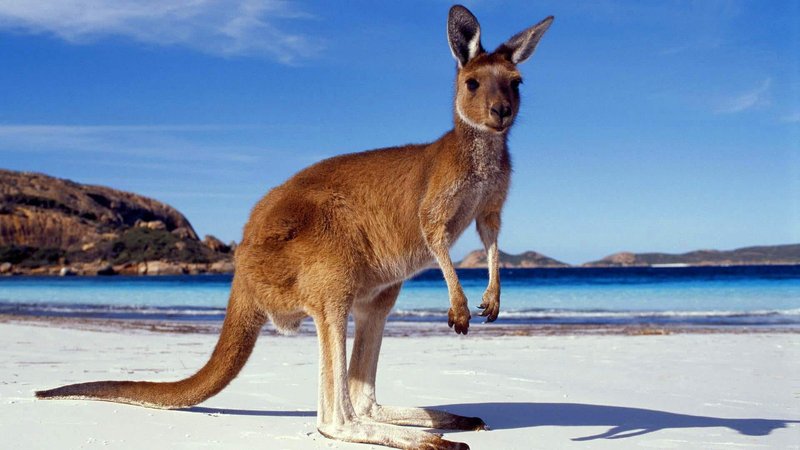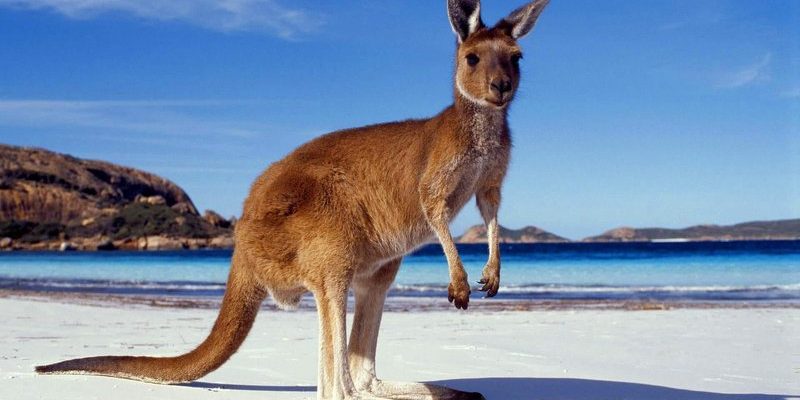
The kangaroo isn’t just a national symbol for Australia; it also embodies ideas of strength, family, and resilience in many cultures. Here’s the thing: understanding how the kangaroo is viewed across different societies can help us appreciate its role in our world. Whether it’s in myths, artistic representations, or even sports mascots, the kangaroo hops its way into our hearts in multiple ways.
The Kangaroo in Indigenous Australian Culture
Indigenous Australians have rich oral traditions where the kangaroo plays a vital role. In many Aboriginal stories, kangaroos are not just animals; they’re often seen as ancestral beings or spirits. For instance, the Yawuru people share stories of the *bira*, a giant kangaroo that taught them survival skills. These narratives, steeped in cultural significance, highlight how deeply ingrained the kangaroo is in the identity of Indigenous Australians.
Moreover, kangaroos are depicted in traditional art. Rock paintings from thousands of years ago still show kangaroos in various poses, portraying them as symbols of sustenance and connection to the land. Their presence in artworks reflects not only respect for nature but also the essential role kangaroos play in the ecosystem, symbolizing balance and harmony.
It’s fascinating to think about how these representations guide the community’s relationship with the environment. The kangaroo is often associated with survival and resourcefulness, embodying qualities that people strive to uphold. When you hear these stories or see these artworks, you’re witnessing a history that’s alive and breathing, much like the kangaroo itself.
Kangaroo Myths and Legends Around the World
Beyond Australia, kangaroos have jumped into the mythologies of other cultures. In various South Pacific islands, they symbolize good fortune and prosperity. In some tales, a kangaroo might appear to help a lost traveler or provide protection during a storm. These stories create a sense of magic around kangaroos and portray them as helpful, guiding spirits.
Interestingly, in the realm of modern fantasy, kangaroos have also made appearances in popular literature and films. For instance, in children’s stories, they are often depicted as playful and caring characters. Think of *Kanga and Roo* from the beloved *Winnie the Pooh* series—this mother-son duo represents nurturing and familial love. Their adventures teach young readers about friendship and compassion, making kangaroos relatable even to those who may never see one in real life.
These cross-cultural representations show that the kangaroo is more than just an animal; it serves as a bridge between different ideas and values. Honestly, it’s heartwarming how a single creature can connect people through stories that resonate with our shared experiences.
The Kangaroo in Art and Literature
Art forms a powerful medium for expressing how the kangaroo is represented. Artists often depict kangaroos in various styles, ranging from realistic portrayals in traditional paintings to abstract interpretations that emphasize their graceful movement. It’s one of those things that makes you stop and think—how does an artist see the kangaroo?
In literature, kangaroos often symbolize freedom and the spirit of adventure. Writers harness their unique way of moving—ever so agile and curious—to represent characters who are on a journey of discovery. For example, in children’s literature, the kangaroo is often portrayed as a character that inspires exploration and bravery. These narratives encourage young readers to embrace new experiences with an open heart, much like a kangaroo bounding through the bush.
Moreover, the kangaroo’s image is used frequently in branding and advertising, especially within Australia. It’s synonymous with the country’s identity, featuring on everything from logos to tourist promotions. This use in commercial spaces underscores the kangaroo’s cultural significance and its role in shaping Australia’s image to the world.
Kangaroo Symbolism in Sports and Mascotry
In the world of sports, kangaroos often embody strength and agility. Many Australian sports teams adopt the kangaroo as their mascot, allowing fans to connect with a powerful symbol of national pride. For example, the Australian National Rugby League team, the *Western Sydney Wanderers*, features a kangaroo as part of its branding, representing speed, resilience, and teamwork.
These mascots not only foster team spirit but also connect fans with cultural heritage. The kangaroo, through its playful energy and formidable presence, becomes a rallying point for communities—bringing them together not just to support a team but to celebrate a shared identity.
It’s interesting how a mascot can amplify the spirit of competition and camaraderie. When you cheer for a kangaroo, you’re not just rooting for a sports team; you’re also embracing the stories, values, and spirit that the kangaroo represents on a much larger scale. It’s community, culture, and celebration all wrapped up in one lively figure.
The Kangaroo in Modern Media and Popular Culture
Today, the kangaroo has bounded into modern media, appearing in various forms—from animated characters to video games. Popular movies feature kangaroos that represent both fun and friendship, creating a new generation of fans who recognize the kangaroo as a symbol of joy and entertainment. For instance, in the animated film *The Kangaroo Chronicles*, the adventurous spirit of kangaroos captures the hearts of audiences worldwide.
These portrayals shape how people view kangaroos. You might wonder how much a kid’s perception of kangaroos is influenced by these fun characters. It’s pretty significant! These media portrayals introduce audiences to kangaroos in a way that feels approachable and engaging. It demystifies the animal, transitioning it from just a wild creature to a friendly companion.
Moreover, social media plays a huge role in spreading the fascination with kangaroos. Cute videos and images flood platforms like Instagram and TikTok, enchanting viewers with their playful antics. This not only entertains but also educates people about kangaroo behavior, conservation, and their place in the ecosystem. The kangaroo becomes a star, bridging gaps between education, entertainment, and cultural appreciation.
Kangaroo Conservation and Cultural Significance
As we delve deeper into the world of kangaroos, it’s crucial to recognize their status in conservation efforts. While they hold a revered place in culture and folklore, their actual survival faces challenges due to habitat loss and hunting. This impacts not only kangaroos but also the Indigenous stories that have been passed down for generations.
Conservation programs often emphasize the cultural significance of kangaroos. By linking their survival to the stories and traditions of Indigenous Australians, these initiatives help foster respect and awareness. It’s a compelling reminder that protecting wildlife is also about preserving the narratives and heritage that enrich our society.
Moreover, public awareness campaigns use the kangaroo’s popularity to educate people about environmental issues. Through fun, engaging content—like games, social media posts, and documentaries—people can learn how to contribute to conservation efforts. The kangaroo serves as a charismatic ambassador for wildlife preservation, reminding us all why these creatures matter.
At the end of the day, our connection to kangaroos is multi-faceted. They represent not just a unique animal but an emblem of cultural pride, environmental responsibility, and community unity.
In closing, the kangaroo is so much more than just a marsupial hopping through the Australian outback. It’s a powerful symbol embedded in stories, art, sports, and popular culture across the globe. From Indigenous myths to modern media, the kangaroo showcases how nature inspires creativity and connection. Understanding its representation can help foster a deeper appreciation for this extraordinary creature and the cultures that celebrate it. So next time you think of a kangaroo, remember—it’s not just about the hop; it’s about the heart.

